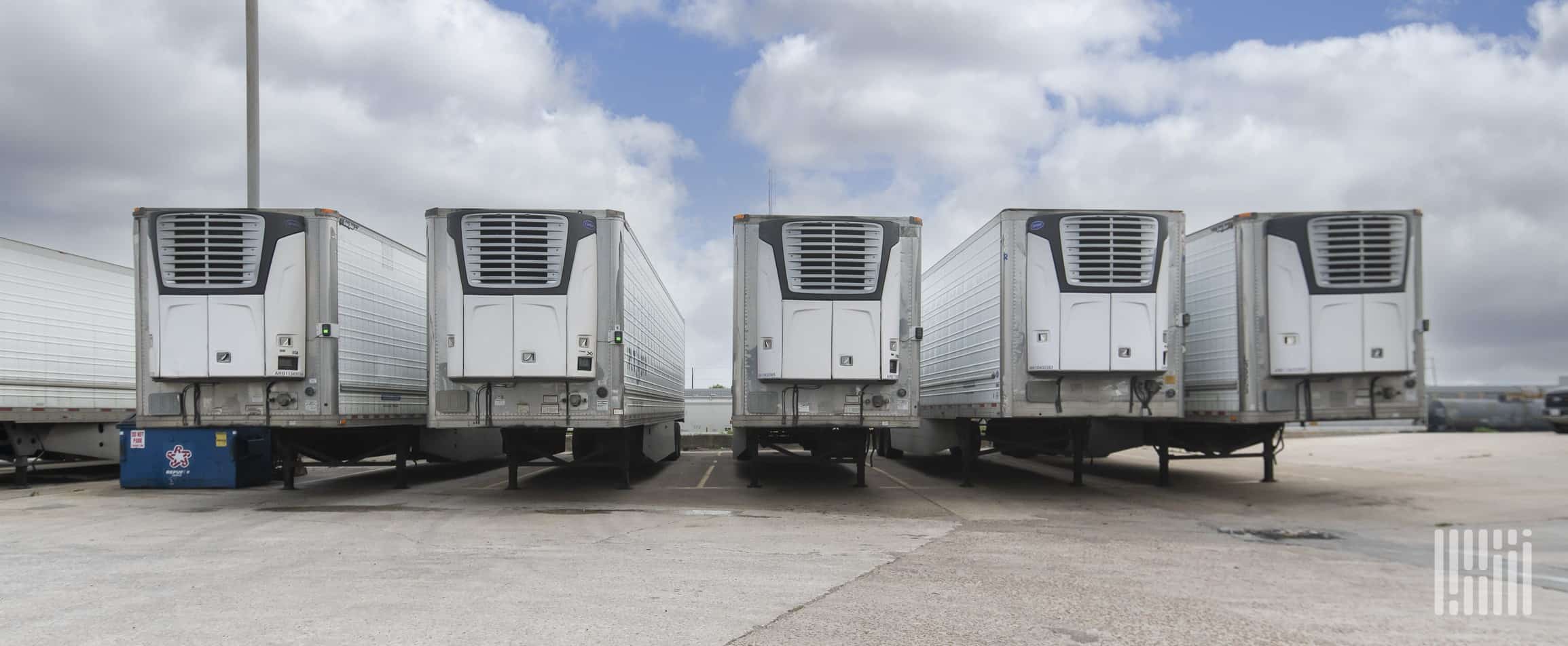Looking to make a delivery without the hassle of unloading and reloading your truck? Drop and hook trucking is an efficient method of transporting goods compared to traditional trucking. You can move goods across the country easier and keep the wheels of commerce turning. Consider this type of trucking to save time and transport more goods.
How Does Drop and Hook Work?
Drop and hook trucking consists of a truck driver dropping off a loaded container at a facility and hooking on an empty or preloaded trailer. to transport it back to its final destination or vice versa. Let’s take a look at the process.
How Long Does It Take?
Drop and hook is a straightforward process. The length of time can depend on the distance between the dropoff point and the location of pickup, the efficiency of loading and unloading and potential setbacks. It can take as little as a few minutes and typically does not take more than 30 minutes after arrival at the delivery spot.
How Do You Drop and Hook a Trailer?
For warehouse workers, the process entails ensuring the trailer is parked in a safe, clear location, free from traffic. This makes it possible for the trailer to be carefully lowered and uncoupled from the vehicle.
Afterward, truck drivers should slowly back out from under the newly loaded trailer and use their mirrors to ensure that their fifth wheel slides beneath the trailer. The bottom edge should make contact with the fifth wheel, which allows drivers to use it to lift the trailer and adjust it as needed. Then, drivers should continue to back in until they hear and feel the kingpin and fifth wheel lock.
After decreasing the forward gear and tugging the tractor forward to double-check that the fifth wheel is locked, it’s important to leave the vehicle to take a physical look to make sure everything is locked into place.
How Do Live Loads Compare to Drop and Hook?
Live loads refer to loads where containers are filled while the driver waits at the site of the filling. In most cases, drivers aren’t compensated for the time they spend waiting for their loads to be filled.
Sometimes, the amount of time it takes for loads to be filled can consume time that should be spent out on the road. Waiting around isn’t a problem drivers deal with when it comes to drop and hook trucking because filled loads are already waiting to be hauled upon a driver’s arrival.
Who Are Drop and Hook Programs For?
Drop and hook programs are especially beneficial for large shippers who value saving time and funds. While the majority of Fortune 500 companies currently use drop and hook programs, small- and medium-sized businesses that value adaptability and efficiency could benefit from drop and hook programs, too.
How Can Owner-Operators Find Drop and Hook Loads?
Even though drop and hook trucking is primarily associated with big trailer fleets, owner-operators can also use this method. Owner-operators can find loads through platforms designed to connect them with drop and hook bookings.
Advantages
There are numerous reasons why drop and hook trucking is preferable to other methods which include:
- Lower fines: Drop and hook trucking helps ensure that carriers arrive on time which helps eliminate the fines associated with missing delivery windows.
- Increased on-time percentage: Drop and hook trucking jobs allow drivers to hit their pickup windows more often, which makes their on-time percentage more favorable to vendors.
- Contactless transactions: Since trailers are pre-loaded in drop and hook trucking jobs, drivers aren’t required to touch any of the cargo.
- Not having to rely on others: Drop and hook trucking means truckers don’t have to rely on how fast workers unload their cargo before hitting the road again.
- Easier scheduling: Since the driver does not have to wait for the trailer to be loaded or offloaded, the time spent on each journey can be monitored easily, which streamlines scheduling.
- Reduced physical strain: Unloading and reloading cargo can be physically demanding work. Drop and hook loads reduce the labor required.
Disadvantages
Some of the disadvantages of drop and hook trucking include:
- Limited selection of goods that can be shipped: Goods like pharmaceuticals and food can’t be transported using this method.
- Lead time needed: To have fully-loaded containers that are ready to be shipped prepared for truckers upon their arrival, warehouses need an adequate amount of time to prepare.
- Certain facilities may not have the space: Some facilities are too compact or restricted to accommodate drop and hook trucking.
- Reliability: If something’s wrong with a shipment, it can take longer than a trucker anticipates. Unexpected delays can have a domino effect on truckers’ other loads.
- Less control: Drivers have less control over the loading and unloading process. This can lead to more issues and additional liability for damaged cargo.
Drop and Hook vs. No-Touch Freight
In drop and hook trucking, the driver drops a trailer at a loading dock and hooks on a new one. As a result, the driver doesn’t need to unload the cargo. Trailers are loaded for pickup by employees at a warehouse or facility prior to the driver’s arrival. But the driver still needs to hook and unhook trailers.
In contrast, no-touch freight refers to a shipping arrangement where the driver doesn’t handle the cargo at any point. Cargo’s loaded and unloaded by other workers, and the driver’s primary responsibility is transporting the trailer.
Another difference is that the driver is responsible for inspecting and verifying the cargo. This isn’t typically part of the job when hauling no-touch freight.
Transport Goods Efficiently with Drop and Hook Trucking
Drop and hook trucking is a transportation method in which drivers don’t need to wait for trailer loading or unloading. Truckers pick up and drop off trailers at the designated distribution point. This is the simplest way for drivers to make their run, and it helps them save time. Drop and hook truckers also make more because they don’t have to wait at the distributors.
FAQ
Drop and hook takes as little as a few minutes to up to 30 minutes if there are no issues.
Yes, drop and hook is easy. Compared to live loading, drop and hook saves time and effort.
50% drop and hook means a job or route where half of the deliveries use drop and hook trucking and drivers don’t need to unload cargo themselves. The other half of the deliveries may use traditional trucking where the driver is responsible for loading and unloading the cargo.
Sign up for a FreightWaves e-newsletter to stay informed of all news and trends impacting supply chain careers and operations.


